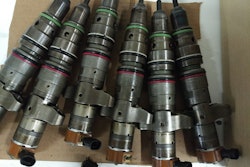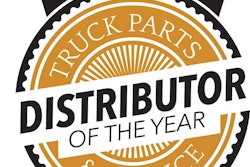By Bill Wade, Wade & Partners
Lollapalooza Effect: (A Charlie Munger term) When multiple cognitive biases reinforce one another within a group, irrational beliefs will take over — often referred to as Groupthink.
My partner, Bruce Merrifield, and I work with all types and sizes of distributors on the single subject of distributor profitability. Our WayPoint users represent $75 billion in distributor revenues. This enables us to analyze many aspects to find common profitability traits.
One problem often occurs with small customers with unprofitable, average-order sizes — at least the large majority of them. Before we go on, I am NOT against all little customers, one-off Internet purchases or walk-ins.
When distributors create a Cost-to-Serve (CTS) model to estimate and rank customers by net-profitability, there are typically two customer characteristic shocks:
- Some big-margin-dollar customers are big losers. Their many small-dollar orders and/or line-item picks eat more CTS dollars than their Gross Profit dollars (GP$).
- Importantly (and curiously), 40 to 80 percent of all customers are small, with small to average order sizes. Their CTS also exceeds their GP$.
Warning! You can rapidly increase Small-Losers with a website marketing effort that wins new customers with terms that won’t insure enough GP$s per order.
Even mighty Amazon has this problem
You could argue that Amazon wins because of a historically huge war chest or maybe it is its army of engineers, robots and delivery drivers. But Amazon didn’t start out with those advantages.
Jeff Bezos built the company with a customer-first mentality. An empty chair representing the customer at every Amazon meeting serves as a constant internal reminder of its focus. Bezos is often quoted as saying, “Obsessing over customer experience is the only long-term defensible competitive advantage.”
Amazon’s analytics can identity SKUs on which they “Can’t Realize a Profit” (CRaP). Even with its improving, world’s-best fulfillment and last-mile delivery costs, it can’t cover costs on items lower than $15 per pick/order.
Amazon’s fixes to date? I know …This model stinks! Just change it to turn little losers into winners. But, if 100 percent of operational costs are in the CTS model, then costs shift to turn other accounts into losers.
- Bully vendors to bundle items or to do third-party shipping for Amazon’s orders.
- Increase prices on small-dollar-pick items.
- Make items “add-on” status.
- “Pantry Items” (a shipment goes when goods ordered reach a large enough total).
Heavy duty distributors get killed on small-dollar picks, too. Distributors that invest in a CTS model at the line-item level typically discover:
- Up to 70 percent of all line-item picks are losers.
- 65 percent of warehouse orders are losers.
Remember, we are not guessing. Terabytes of distributor operating statistics are crystal clear on these profit effects.
A recent article delved into the challenge that many distributors face. Titled “Free Shipping Is a Lie,” it analyzes a common (but obvious) culprit. A key point is that all e-tailers struggle with shipping costs, as do traditional parts and service industrial locations:
- Amazon.com, which enjoys deeply discounted rates on shipping, is losing billions of dollars a year on shipping. The company only charges consumers for 55 percent of what they spend on shipping. This practice of undercharging cost Amazon $5 billion in 2015.
- Larger “big box” retailers have found that it costs three times as much to ship inventory to a customer’s door than to a retail store. Yet, these retailers sell products for the exact same price in stores and online. This means they’re losing money.
- Startup online retailers often need to be backed by venture capital to overcome the high cost of providing free shipping — these businesses literally can’t afford to offer free shipping until they reach high volumes of sales.
The long and short of the article: Free shipping is expensive, and arguably not sustainable. But, for now, just about everyone in e-commerce is stuck with it.
Thank goodness there are still a few highly-profitable SKUs (and direct-ship orders) to pay for losing items and losing customers. Case example: a big fleet distributor got these web-selling results with their first web shot:
Company sales popped by 8 percent while customer and transaction counts doubled!
But 80 percent of all customers generated only 5 percent of the GP$s on 25 percent of all transactions. The new CTS-model verdicts:
- The Web – hobby division was a net-loser
- Traditional distributor fulfillment costs exceed Amazon’s.
The Lollapalooza denial reaction
I know … this model stinks! Just change it to turn little losers into winners. But, if 100 percent of operational costs are in the CTS model, then costs shift to turn other accounts into losers.
Simple. Kill the CTS model and return to the traditional, data-free Lollapalooza Belief-Bundle that includes:
- All sales and margin dollars are equally good (irrespective of related CTS);
- All costs are fixed in the moment, we can always take one more order (or thousands) without hiring any more CTS fulfillment people or reinventing CTS like Amazon;
- All new sales/margin dollars grow: economies of scale, profits and rebates;
- Reps don’t like to see commissionable accounts as net-profit losers. Pretend they aren’t;
- Win more customers (of any size, kind) to replace defections and deaths.
Somehow little losers will grow into big profitable accounts. Somehow little losers have higher average GP% which makes them (more) profitable. Everyone we listen to in the industry shares these beliefs (confirmation bias?). Stick with the herd!
And, we’re doing OK financially — not exactly enough to grow the business or our people or future customer service breakthroughs. Never mind. More volume will win. Toys R Us and Sears prove this!
There Is plenty of room to win … but let’s be real
Amazon analytics also identify popular items that have the most margin-dollars in the pick/order. Its private-label clones (or “Amazon Exclusive” resellers) can sell for 50 percent less with great reviews and still be profitable. How?
Amazon and its clone-friends are exploiting traditional channels’ high-cost service structure that is funded by cross-subsidy pricing of full-lines of products. Only a handful of bearings fail — should you carry all 1,800 numbers?
Cross-subsidized full-line pricing? Assume a product line has ten colors all priced “fairly” at the same per unit. But, two SKUs are 80 percent of the sales and a few don’t sell at all.
The killer clones will only come in the one or two best colors. You can raise prices on the non-sellers to cover their true, total supply-chain cost, but they don’t sell at the lower subsidized price.
High-Cost Structure? (Major and most controversial thought): In most channels, there are sales reps for both factories and distributors. They were originally needed to push new products through channels and create final demand. Fast forward: what if more than 80 percent of all sales today are for commodities to repeat buyers? And, clone-availability news is digitally instant from Amazon?
Rep overhead costs and channel-push-through costs are not built into the clone pricing at Amazon. Just a (major, important) observation.
Experts get rewarded, sellers get slaughtered
Get the right analytics to fix CRaP SKUs (and customers). Be prepared to be more competitive on items that may be cloned. And, start rethinking overall business and selling models. Next-gen digital buyers want e-selling assistance only as needed. Call Bruce or me if you want to discuss your specific situation.
What to do … seriously?
Consider generating this data-driven approach to grow your business faster than industry averages:
- Identify what you deliver that is a true commodity. Recognize that over the coming years, that business is likely to decline.
- Evaluate where you deliver the greatest value to your customers. How can you offer that beyond your existing market?
- Attract a crowd by answering the key questions on your website that your ideal customers would be asking.
- Build a business model that is a modest subscription service to help those facing those challenges. You might offer three different levels to appeal to different types of buyers.
Morphing any business will not happen overnight. If you feel that Amazon and other retailers are messing up your sandbox, you are right. But, here’s the thing: You can either complain about it, or you can position yourself to provide value to the market that needs the expertise you offer.
Your value is no longer about delivering the commodity item. Rather, your value lies in the expertise and service the customer can’t get elsewhere.
Bill Wade is a partner at Wade & Partners and a heavy-duty aftermarket veteran. He is the author of Aftermarket Innovations. He can be reached at [email protected].










